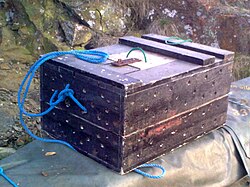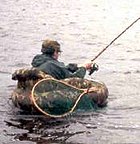|

Яндекс Маркет

AliExpress

Купер

Wildberries

Ozon

Ашан

Мегамаркет

Джум

Спортмастер

Золотое Яблоко

Улыбка Радуги

Сима-ленд

Магнит Маркет

Стокманн

Авито

Лэтуаль

ВсеИнструменты

Литрес

Литнет

Лабиринт

Леонардо

Буквоед

Читай-город

Book24

Мегафон

MTC

T2

Yota

Ситилинк

М.Видео

Эльдорадо

Lamoda

Kari

Zenden

Shopotam

CDEK.Shopping

Raketa

USmall

Sunlight

585 Золотой

Холодильник.ру

КотоФото

OLDI

Getsy

Video-shoper

Всёсмарт

Лю.ру

DNS

RBT.ru

Онлайн Трейд

ОГО!

Fix Price

Галамарт

Familia

Магнит Косметик

Четыре Лапы

Рив Гош

Комус

Аудиомания

Dr.Head

Музторг

АльпИндустрия

Ridestep

Технопарк

Quke.ru

Restore:

Подружка

Rendez-Vous

Строительный двор

Hoff

Лемана ПРО

220 Вольт

Много мебели

Divan.ru

Цвет Диванов

Столплит

BestMebel

ЭТМ

Петрович

OBI

Максидом

Домовой

Евродом

Kitchen Master

Твой Дом

Petshop.ru

Старая Ферма

Центр

BigGeek

GroupPrice

BebaKids

СоюзЦветТорг

Красный Карандаш

MyIndia

Postel Deluxe

Порядок

Galaxystore

Street Beat

Мир Климата

Галерея Косметики

Снежная королева

ЦУМ

Иль де Ботэ

SV77

Bestwatch.ru

Ножиков

Leomax

Сантехника Тут

Aromacode

ВелоСклад

ВелоДрайв

Gipfel

Дом Спорта

ЗооПассаж

Планета Спорт

iPiter

KremlinStore

МИФ

Clever

OnlineSemena.ru

Детский Мир

Ярмарка Мастеров

e-Katalog

Randewoo

Билайн

WishMaster

Amazon.com

eBay.com

AbeBooks

Wish

Joom

Banggood

DHgate

Alibaba

ChicMe

LightInTheBox

YOOX

Drop

iHerb

SHEIN

GearBest

Samsung

Farfetch

SSENSE

MiniInTheBox

Made in China

Fiverr

Overstock

StockX

Newegg

Boohoo

Book Depository

YesStyle

Lookfantastic

Forever 21

UGG

Beauty Bay

Kobo

Adorama

Cotton On

Cult Beauty

Vivino

Myprotein

Shopbop

ZAFUL

Ferns N Petals

PatPat

Zavvi

Noracora

GeekBuying

Milanoo

Brooks

Better World Books

Alibris

JD Sports

DealExtreme

eBooks.com

Tomtop

Strawberrynet

StyleKorean

The Luxury Closet

JustFashionNow

Book Outlet

Sunsky

Govee

Cafago

TVC Mall

Italo Jewelry

Gshopper

Saramart

Etsy

Taobao

Яндекс Путешествия

Авиасейлс

Tutu.ru

Ozon Travel

Onlinetours

Слетать.ру

OneTwoTrip

Островок!

Biletix

AnywayAnyday

МТС Travel

Level.Travel

Авито Путешествия

Донинтурфлот

Trip.com

Т-Банк Авиа

Т-Банк Отели

City.Travel

ЖилиБыли

Aviakassa

АэроТур

Poezd.ru

Coral Travel

Tez Tour

Путевка.ком

Русь

Дельфин

Уральские авиалинии

Узбекские авиалинии

Cherehapa

Infobus

Суточно.ру

Аэроэкспресс

АльпИндустрия

Водник

Ridestep

Tripster

Booking.com

Hotels.com

Agoda

Priceline.com

Airbnb

Skyscanner

Trivago

Momondo

Hostel World

Trainline

Kiwi.com

Hotwire

Lastminute.com

Omio

Radisson Hotels

Rentalcars

Europcar

Sixt

HotelsCombined

TravelZoo

Ebookers

Emirates

Etihad Airways

Flydubai

Viator

Uzbekistan Airways

TransferGo

Глория Джинс

O'STIN

Befree

Love Republic

Zarina

Finn Flare

Baon

Zolla

Sela

Lovely Style

Demix

Alexander Bogdanov

BASK

Respect

Rieker

Эконика

Lacoste

Incanto

Mad Wave

Yves Rocher

Aravia

L'Occitane

KIKO Milamo

Natura Siberica

Тяньши Tiens

PlayToday

Sokolov

Эвалар

AVON

Аскона

ECCO

Kitfort

Tefal

Huawei

Xiaomi

Redmond

Аквафор

ЭПЛ

StyleKorean

Gulliver

Hansa

Pompa

Polaris

Kanzler

Moulinex

Krups

Dewal

Камневеды

Верфь

Zippo

Adria

Nike

Adidas

Pandora

Puma

Reebok

ASICS

Bershka

Converse

Uniqlo

Lacoste

Benetton

Nautica

Jack & Jones

Superdry

HP

Dell

Lenovo

NVIDIA

Acer

Xbox

JBL Harman

Logitech G

Blackview

RedMagic

Литрес

Литнет

Иви

Start

Premier

Профи.ру

Домовёнок

InternetOpros

Экспертное мнение

Яндекс Афиша

Яндекс Аренда

Яндекс Недвижимость

Яндекс Музыка

Яндекс Задания

Юла

СберМобайл

Т-Мобайл

MTC Интернет+ТВ

Зарплата.ру

SuperJob

HH.ru

Boxberry

Biglion

Подари Трек

СоюзЦветТорг

Гранд Флора

Флора Экспресс

Кибер Флорист

Цветочный Ряд

Букет СПБ

МТС Live

Ticketland

Kassir

VK Видео

Кинопоиск

Wink

Ростелеком

FL.ru

Teamo

Мамба

Едадил

Госуслуги

Циан

Домклик

Домофонд

Столото

Фонбет

Winline

Olimpbet

Лига Ставок

1хСтавка

LetyShops

Toloka

IQ Option

Audible

Discovery+

Blinkist

Drop

1xBet

eHarmony

Spotify

Netflix

BongaCams

Яндекс Браузер

Яндекс

Яндекс Директ

Яндекс Бизнес

Яндекс 360

Отзовик

IRecommend.ru

FL.ru

ВКонтакте

Одноклассники

Telegram

Дзен

Живой Журнал

YouTube




TikTok

Wikipedia

LiveJournal


Viber

Skype


Envato

Canva

Vimeo

Proton Mail

Weebly

Shutterstock

TemplateMonster

WIX

Squarespace

123RF

Depositphotos

Adobe Stock

Alamy

Freepik

Envato Market

BigCommerce

PlaceIt

99designs

Pond5

Bigstock

ThemeIsle

Logo Maker

SpaceWeb

Maria Hosting

Timeweb

Reg.ru

AdminVPS

Спринтхост

Макхост

VDSina

Fornex

Ru-Center

GoDaddy

HugeDomains

HostGator

OVHcloud

Hostinger

Namecheap

Network Solutions

Liquid Web

InMotion

iPage

HostPapa

Just Host

InterServer

MochaHost

Cloudways

One

AccuWeb

UK2.net

Domain.com
Camping equipment
• Alcohol stove
• Aleutian kayak
• Alpenstock
• Avalanche transceiver
• Axe
• Backpack
• Baggage
• Basha
• Beach umbrella
• Bear-resistant food storage container
• Bell tent
• Belly bag
• Belt bag
• Bender tent
• Beverage-can stove
• Billycan
• Binoculars
• Bivouac shelter
• Boat
• Briefcase
• Buddy Burner
• Bum bag
• CQC-6
• Campervan
• Campingaz
• Campmobile
• Canoe pack
• Canteen
• Carabiner
• Caravan
• Chuck box
• Compass
• Cord lock
• Corf
• Cowboy bedroll
• Crab trap
• Crampons
• Deckchair
• Diving mask
• Duffel bag
• Duluth pack
• Dutch oven
• Dynamic rope
• Fanny pack
• Field ration
• Firelighter
• First aid kit
• Fish hook
• Fish trap
• Fishfinder
• Fishing bait
• Fishing basket
• Fishing float
• Fishing line
• Fishing lure
• Fishing reel
• Fishing rod
• Fishing tackle
• Flare
• Fly
• Folding chair
• Folding table
• Garment bag
• Guide book
• Hammock
• Hammock camping
• Hand luggage
• Hand warmer
• Harpoon
• Hexamine fuel tablet
• Hiking boot
• Hobo stove
• Hunting knife
• Hybrid bicycle
• Hydration pack
• Hydration system
• Ice axe
• Ice tool
• Inflatable boat
• Inflatable pool
• Insect repellent
• Kayak
• Kelly Kettle
• Layered clothing
• Leatherman
• Lobster hook
• Lobster trap
• Loue
• Luggage lock
• Lusikkahaarukka
• Machete
• Match
• Mess kit
• Money belt
• Mosquito net
• Mountain bike
• Mountaineering boot
• Multi-fuel stove
• Multi-tool
• Noseclip
• Oilskin
• Outboard motor
• Packbow
• Packing cube
• Packraft
• Paddle
• Parasol
• Pasiking
• Personal watercraft
• Phase-change material
• Pocketknife
• Polespear
• Popup camper
• Portable stove
• Portable water purification
• Primus stove
• Pulk
• Puukko
• Quiver tip
• Raincoat
• Recreational vehicle
• Rope
• SOG Knife
• Saddlebag
• Sami knife
• Satellite navigation device
• Sebenza
• Shamiana
• Shelter-half
• Sibley tent
• Sierra cup
• Sleeping bag
• Sleeping bag liner
• Sleeping pad
• Snorkel
• Snowshoe
• Solar Spark Lighter
• Space blanket
• Speargun
• Spork
• Sterno
• Stuff sack
• Suit bag
• Suitcase
• Sun protective clothing
• Sunglasses
• Sunscreen
• Survival knife
• Svea 123
• Swag
• Swimbait
• Swimfin
• Swiss Army knife
• Tarp tent
• Tarpaulin
• Teardrop trailer
• Tent
• Tent peg
• Tent platform
• Therm-a-Rest
• Tinderbox
• Touring bicycle
• Towel tablet
• Trangia
• Travel bag
• Travel guide
• Travel pack
• Travel trailer
• Travel wallet
• Tree tent
• Trekking pole
• Trident
• Truck camper
• Truck tent
• Umbrella
• Umbrella hat
• Umnumzaan
• Vacuum flask
• Waders
• Walkie-talkie
• Warrior knife
• Water scooter
• Wetsuit
• Zip line
Tourism
+ Atomic tourism
+ Bicycle tours
+ Camping
+ Camping equipment
+ Campsites
+ City guides
+ Cruise lines
+ Cruise ships
+ Cultural tourism
+ Ecotourism
+ Fishing
+ Fishing equipment
+ Geotourism
+ Hospitality companies
+ Hospitality industry
+ Hospitality services
+ Hostels
+ Hunting
+ Industrial tourism
+ Lounge services
+ Medical tourism
+ Nightclubs
+ Outdoor recreation
+ Overtouristed areas
+ Public transport
+ Railway companies
+ Railway stations
+ Rapid transit
+ Religious tourism
+ Resort towns
+ Resorts
+ Rural tourism
+ Sex tourism
+ Space tourism
+ Stations, terminals and stops
+ Sustainable tourism
+ Timeshare
+ Tour guides
+ Tourism agencies
+ Tourism by city
+ Tourism by continent
+ Tourism by country
+ Tourism by region
+ Tourism campaigns
+ Tourism companies
+ Tourism geography
+ Tourism law
+ Tourism magazines
+ Tourism ministries
+ Tourism museums
+ Tourism regions
+ Tourism-related lists
+ Tourist accommodations
+ Tourist activities
+ Tourist guides
+ Trains
+ Travel agencies
+ Travel insurance
+ Types of tourism
+ Vacation rental
+ Villas
+ Virtual tourism
Tourist attractions
+ Aquaria
+ Archaeological sites
+ Arts venues
+ Beaches
+ Brothels
+ Casinos
+ Castles
+ City Sightseeing
+ Coasts
+ Cultural heritage
+ Deserts
+ Doors Open Days
+ Entertainment districts
+ Entertainment events
+ Entertainment venues
+ Event venues
+ Folly buildings
+ Forests
+ Fountains
+ Game reserves
+ Glass-bottomed bridges
+ Heraldic sites
+ Hiking trails
+ Hindu pilgrimage sites
+ Historic districts
+ Islands
+ Lakes
+ Landmarks
+ Lists of tourist attractions
+ Military attractions
+ Monuments and memorials
+ Mountain view points
+ Mountains
+ Museums
+ National parks
+ Natural arches
+ Nature reserves
+ Observation decks
+ Overlooks
+ Palaces
+ Parks
+ Protected areas
+ Pueblos
+ Railroad attractions
+ Rivers
+ Roadside attractions
+ Royal residences
+ Scenic routes
+ Scenic viewpoints
+ Shopping malls
+ Show caves
+ Space-related tourist attractions
+ Theatres
+ Tourist attractions by city
+ Tourist attractions by continent
+ Tourist attractions by country
+ Towers
+ Town squares
+ Triumphal arches
+ Underground cities
+ Underwater diving sites
+ Visitor centers
+ Waterfronts
+ World Heritage Sites
+ Zoos
Travel
+ Airline routes
+ Bus routes
+ Business travel
+ Circumnavigations
+ Cities
+ Climbing routes
+ Computer reservation systems
+ Countries
+ Crossings
+ Cruising
+ Cycleways
+ Expeditions
+ Exploration
+ Films about travel
+ Geography
+ Hiking equipment
+ Intelligent transportation systems
+ International travel documents
+ Lists of routes
+ Long distance travel
+ Lounge services
+ Luggage
+ Maritime timelines
+ Mountain passes
+ National identity cards
+ Online travel agencies
+ Passports
+ Pilgrimage routes
+ Pilgrimages
+ Railway lines
+ Route planning software
+ Routes
+ Royal visits
+ Sea lanes
+ Specialist travel
+ Student travel
+ Trade routes
+ Tram lines
+ Travel and holiday companies by country
+ Travel books
+ Travel classes
+ Travel gear
+ Travel guide books
+ Travel insurance
+ Travel insurance companies
+ Travel technology
+ Travel television
+ Travel websites
+ Travel writers
+ Travel writing
+ Travel-related organizations
+ Travelers
+ Travelers organizations
+ Traveling business organizations
+ Traveling exhibits
+ Travelogues
+ Treasure voyages
+ Types of thoroughfares
+ Types of travel
+ Visas
+ Voyages
+ Waterways
+ Web Map Services
+ Works about travel
Hotels
+ Apartment hotels
+ Art Deco hotels
+ Art Nouveau hotels
+ Bed and breakfasts
+ Boutique resort chains
+ Camps
+ Campsites
+ Caravanserais
+ Casino hotels
+ Coaching inns
+ Condo hotels
+ Country house hotels
+ Crowne Plaza hotels
+ Extended stay hotel chains
+ Fairmont Hotels and Resorts
+ Five star hotels
+ Heritage hotels
+ History of hotels
+ Holiday Inn
+ Hotel affiliation groups
+ Hotel barges
+ Hotel buildings by year of completion
+ Hotel chains
+ Hotel chains by country
+ Hotel guide books
+ Hotel logos
+ Hotel spas
+ Hotel stubs
+ Hotel terminology
+ Hotel types
+ Hoteliers
+ Hotels by city
+ Hotels by company
+ Hotels by continent
+ Hotels by country
+ Hotels by heritage register
+ Hotels by time
+ Hotels by type
+ Hotels by year of establishment
+ Hotels in fiction
+ InterContinental Hotels Group brands
+ Lists of hotels
+ Lists of hotels by city
+ Lists of hotels by country
+ Luxury hotels
+ Marriott International
+ Marriott International brands
+ Motels
+ Proposed hotels
+ Radisson Blu
+ Radisson Hotel Group brands
+ Radisson Hotels
+ Raffles Hotels & Resorts
+ Railway hotels
+ Resorts
+ Ski areas and resorts
+ Skyscraper hotels
+ Summer camps
+ The Luxury Collection
+ Timeshare chains
+ Wyndham Destinations
Airlines
+ Airline founders
+ Airline headquarters
+ Airline holding companies
+ Airline logos
+ Airline routes
+ Airline stubs
+ Airline tickets
+ Airline trade associations
+ Airline types
+ Airline-related lists
+ Airliner accidents and incidents by airline
+ Airliner seating
+ Airliners
+ Airlines by continent
+ Airlines by country
+ Airlines by type
+ Airlines by year of establishment
+ Airports
+ Business class airlines
+ Cargo airlines
+ Charter airlines
+ Civil aircraft
+ Civil aviation
+ Commercial aviators
+ Fictional airlines
+ Frequent flyer programs
+ Government-owned airlines
+ Helicopter airlines
+ History of airlines
+ Inflight magazines
+ Low-cost carriers
+ Military airlines
+ Proposed airlines
+ Redirects from airline codes
+ Regional airline brands
+ Regional airlines
+ Seaplane operators
Goods
+ Agriculture
+ Airports
+ Amphibians
+ Animals
+ April
+ Arts
+ August
+ Australia
+ Auto parts
+ Automobiles
+ Automotive electronics
+ Baby products
+ Birds
+ Books
+ Brands
+ Building materials
+ Calendar
+ Camping equipment
+ Canada
+ Cars
+ Cashback
+ Children
+ Children's clothing
+ Cities
+ Clothing
+ Companies
+ Computers
+ Concerts
+ Construction
+ Consumer electronics
+ Cooking appliances
+ Cooking utensils
+ Cosmetics
+ Countries
+ Coupons
+ Credit
+ Crockery
+ December
+ Dietary supplements
+ Discounts
+ Diseases and disorders
+ Domains
+ Drinks
+ Drugs
+ Education
+ Elections
+ Electronics
+ Employment
+ Fashion accessories
+ February
+ Festivals
+ Films
+ Finance
+ Firearms
+ Fish
+ Food
+ Food and drink
+ Food preparation appliances
+ Food preparation utensils
+ Food products
+ Foods
+ Footwear
+ Friday
+ Furniture
+ Goods
+ Headgear
+ Health
+ Heating, ventilation, and air conditioning
+ Hobbies
+ Holidays
+ Home
+ Home appliances
+ Horticulture and gardening
+ Hotels
+ Household chemicals
+ Hygiene
+ India
+ Industries
+ Industry
+ Information
+ Insects
+ Internet
+ Ireland
+ January
+ Jewellery
+ Jewelry
+ July
+ June
+ Kitchenware
+ Languages
+ Law
+ Light fixtures
+ Lists
+ Literature
+ Manufacturers
+ Manufacturing companies
+ March
+ May
+ Medical equipment
+ Medical treatments
+ Medicine
+ Memorabilia
+ Military
+ Mobile phones
+ Monday
+ Money
+ Motor scooters
+ Motorcycles
+ Music
+ Musical instruments
+ Nature
+ New Zealand
+ Nigeria
+ November
+ October
+ Office equipment
+ Olympic Games
+ Online retailers
+ Optical devices
+ Pakistan
+ Payment systems
+ Payments
+ People
+ Perfumery
+ Plants
+ Plumbing
+ Politics
+ Products
+ Real estate
+ Regions
+ Religion
+ Sale
+ Saturday
+ Science
+ Search
+ September
+ Services
+ Sex
+ Sex industry
+ Singapore
+ Smartphones
+ Software
+ Sport
+ Sports
+ Sports equipment
+ Stationery
+ Stores
+ Sunday
+ Television
+ Theatre
+ Thursday
+ Tools
+ Tourism
+ Tourist attractions
+ Toys
+ Trade
+ Travel
+ Travel gear
+ Tuesday
+ Undergarments
+ United Kingdom
+ United States
+ Vacation
+ Video games
+ Watches
+ Weapons
+ Weather
+ Web design
+ Web hosting
+ Websites
+ Wednesday
+ World championships
+ 2024
+ 2025
+ 2026






